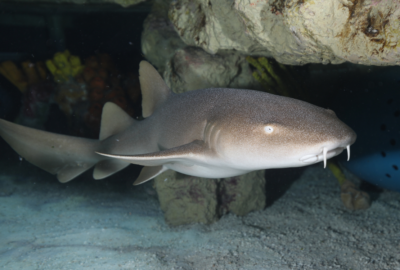Local Sharks: Using Technology to Study Sand Tigers
The post below explains how acoustic telemetry is helping scientists monitor the residency, movements, and habitat use of juvenile sand tigers as well as their movement patterns over vast geographic distances and extended periods of time.
By Jeff Kneebone, PhD on Tuesday, July 18, 2017

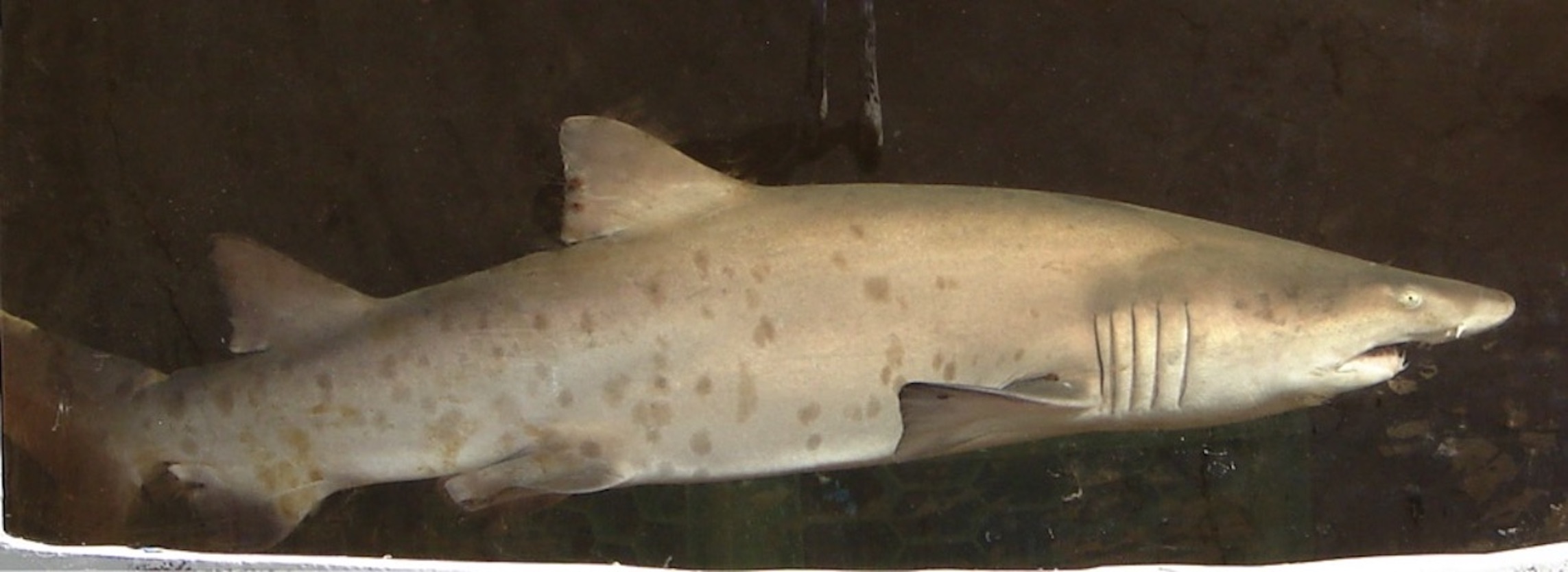
This is the second of a series of posts by Associate Scientist Jeff Kneebone, Ph.D., about his work on sand tiger sharks. Read Part 1 here for some historical context about this species along the East Coast and in New England in particular.
Passive acoustic telemetry is a powerful tool for monitoring fish movements that relies on the interaction between an acoustic transmitter and acoustic receiver. Acoustic transmitters, which emit unique, coded ultrasonic signals at a user-defined interval—think of them as the E-ZPass transponder on your car—are capable of being detected, identified, and archived by acoustic receivers—think of them as the E-ZPass toll booth lane. So, by tagging sand tigers with acoustic transmitters and releasing them into an array of acoustic receivers that were placed at fixed locations throughout PKD Bay, the sharks were free to move around as normal and generate “detection data” whenever they pass within range of an acoustic receiver (usually within about 300 to 1,500 feet). Each “detection” represents a record of the geographic location of a shark at a given time—just like when your E-ZPass transponder passes through an E-ZPass toll booth. Detection data can then be downloaded off each receiver and used to recreate the movements of each tagged shark during its time in PKD Bay. The acoustic transmitters that we used also had batteries that allowed them to remain active for up to 10 years, providing the opportunity to monitor the sharks over a very long period (more on that later).
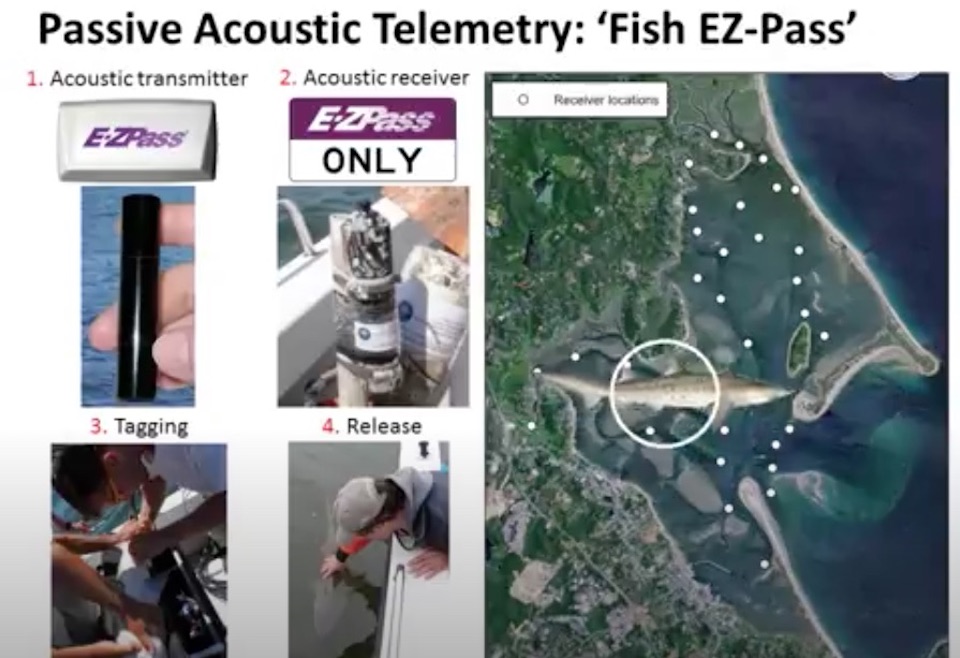
Studying Sharks with an "EZ Pass"
Acoustic telemetry is helping scientists monitor the residency, movements, and habitat use of juvenile sand tigers as well as their movement patterns over vast geographic distances and extended periods of time.
Our passive acoustic telemetry research on juvenile sand tigers began in late summer 2008 and continued during the summers of 2009, 2010, and 2011. Over that time, our research team captured more than 100 individuals, 73 of which were tagged with acoustic transmitters. Using acoustic detection data obtained from our receiver array during these periods, we were able to document that individual tagged sharks were resident in PKD Bay from early June through early October. During each year, individuals remained within PKD Bay for extended periods—up to 124 consecutive days—before moving out of the bay in September and early October in response to dropping water temperatures and shortening lengths of the day. In each year, juvenile sand tigers moved throughout the entirety of PKD Bay, although they tended to spend most of their time in two areas located near river mouths at the northern and western parts of the bay. Shark movements also appeared to be related to the tide, with individuals moving into river mouths and shallow marshes at high tide and into deeper channels at low tide. Perhaps our most interesting finding was that eight of our tagged sharks returned to PKD Bay in the year after they were tagged; three of which also came back again the following year! Based on the data we collected, we were able to determine that PKD Bay is a seasonal nursery area for juvenile sand tigers, a finding that recently led to the nomination of the area as a Habitat of Particular Concern by the National Oceanic and Atmospheric Administration (NOAA).
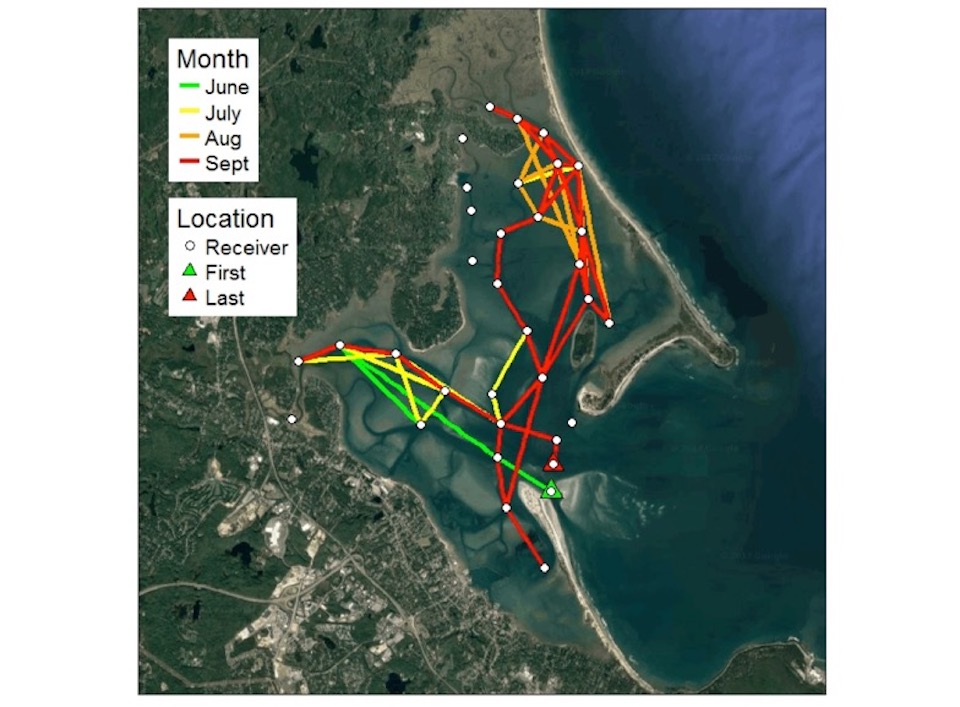
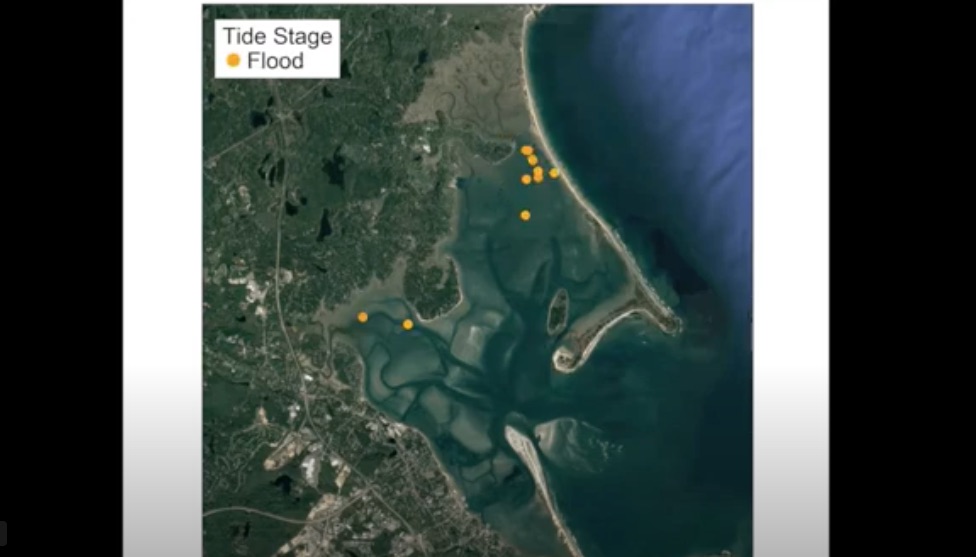
Tidal Movements of Sharks
This video displays tidal movement of sand tiger sharks in 2011 being studied by Anderson Cabot Center scientist Jeff Kneebone, Ph.D.
The above video displays tidal movement of sharks in 2011. Video also shows the two areas that they preferred in the north and west of the bay and how movements were influenced by the tide stage. Sharks generally moved toward the marshes/river mouths at high tide and toward the deeper channels nearer the center of the bay at low tide.
In addition to providing us a great deal of information about the residency, movements, and habitat use of juvenile sand tigers in PKD Bay, passive acoustic telemetry—and the extended battery life of our acoustic transmitters—also allowed us to document the movement patterns of our tagged sharks over vast geographic distances and extended periods of time. Through participation with the Atlantic Cooperative Telemetry (ACT) Network, an online network that facilitates the sharing of telemetry detection data between researchers, we have been able to track the movements of our tagged sharks for up to eight years after they were tagged! Collectively, the detection data that we have received from the ACT Network—along with data from pop-up satellite archival transmitting (PSAT) tags that we deployed in PKD Bay—has indicated that juvenile sand tigers are highly migratory, exhibiting movements in excess of 3,500 miles over the course of a year! Following birth off the Carolinas or Florida in late winter or early spring, young of the year sand tigers migrate northward toward the Mid-Atlantic and New England regions, where they spend the summer months. In the fall, they then migrate southward down the coast toward the waters off the coasts of North Carolina and central Florida, where they spend the winter before moving north again in the spring. Interestingly, juvenile sand tigers only appear to exhibit this migration for the first few years of life and do not appear to come to New England on a regular basis once they reach 3 years old—although some encounters with older, larger sharks have occurred in the past two years.
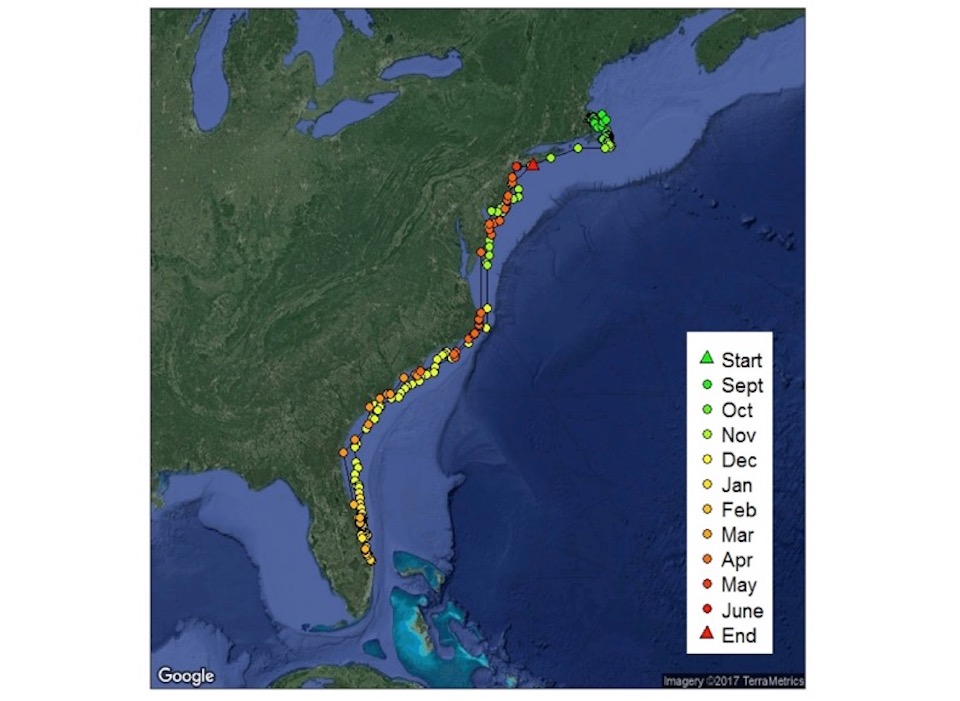
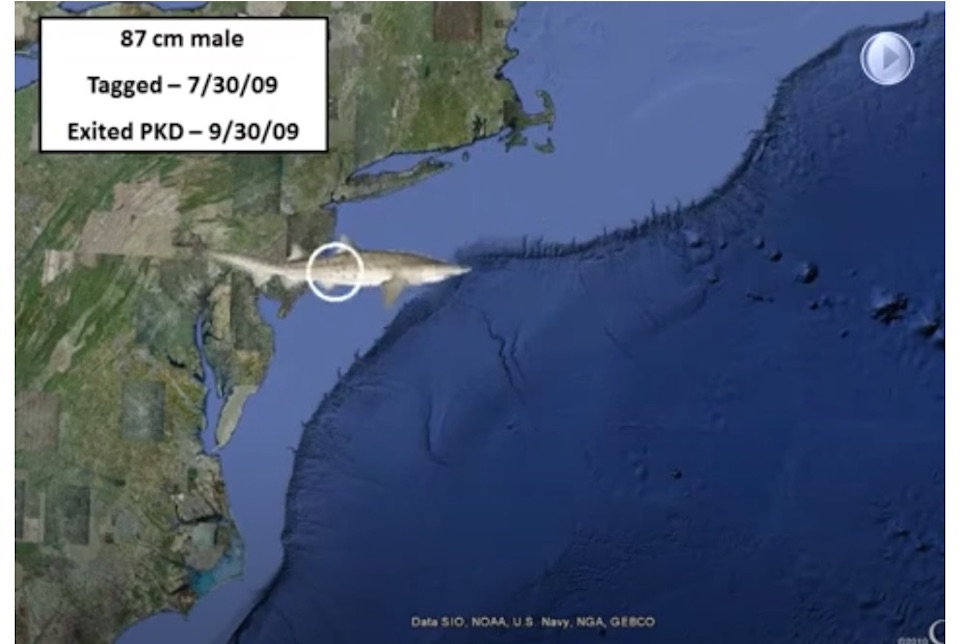
Sand Tiger Shark Movements
Here's an example of detection data from a single sand tiger that was monitored coming back to PKD Bay for 3 straight years.
Check back soon for the more on the sand tiger shark research of Anderson Cabot Center scientist Jeff Kneebone, Ph.D.



